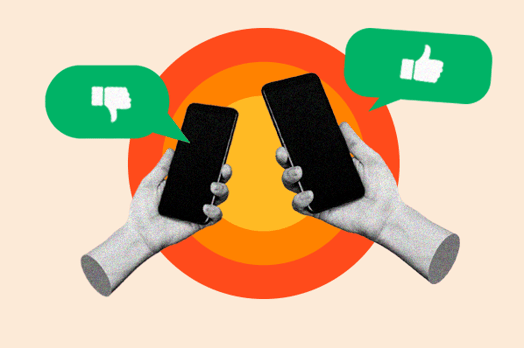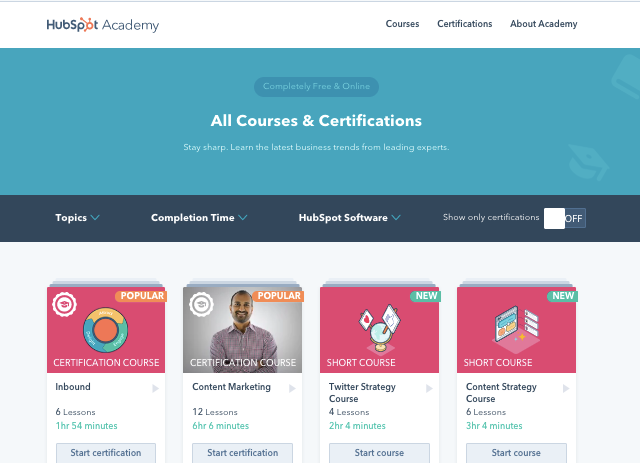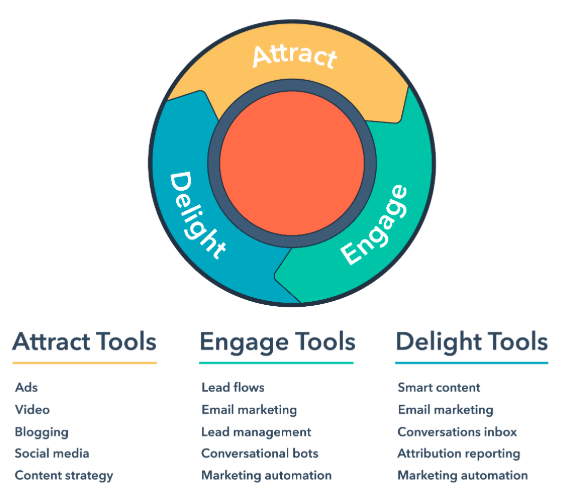A decade ago, social media sites were promotion channels that served as a path between users and the poster’s site. The borders between different sites were fluid — people would discover content on Facebook, Twitter, and LinkedIn, then click through to content (usually hosted on another site).

Today, it's no longer enough to create a piece of content for your own site, then schedule promotion across channels that point back to that content.
Algorithm changes and shifts in the way people choose to communicate mean that marketers are starting to see the need to invest in multi-channel marketing. For many, this means adopting messaging apps.
What Is a Messaging App?
A messaging app is a chat application or platform that enables users to instant message and connect with each other through their computers or mobile devices. Think Facebook Messenger, WhatsApp, WeChat, or Slack (just to name a few).
The Good
In 2015, sources such as Time began reporting that the attention span of the average online consumer had shrunk to less than that of a goldfish.
While the science behind this claim has largely been debunked, the theory itself is compelling.
In a device-dependent age, where consumers are bombarded with endless information, distraction, and content, it seems intuitive that time is one of our most valuable resources.
And like all resources, time is something people don't like to waste it.
 Speed
Speed
Messaging apps allow you to connect and engage your customers in real time. In some cases, messaging apps even help you respond to your potential leads, prospects, and customers instantaneously.
The speed of this communication channel will almost always outpace that seen on other channels, such as email or phone.
Familiarity
Businesses began to send emails to prospects and customers after people had adopted it as a channel to connect with their friends and family. Likewise, businesses only adopted GIFs and emojis in their social posts, emails, and on their websites after their audiences had started using GIFs and emojis as a way to communicate with one another.
Nowadays, people send messages to one another to discuss just about everything. The audience on Facebook is significant and there are already 70 million business pages currently on Facebook. And yet, only 20 million businesses send Facebook messages. This is a huge gap in the total addressable market, and it shows that most businesses just haven’t arrived yet. When they do, we’ll see incredible momentum in adoption because of consumers’ pre-existing familiarity with the channel.
Convenience
Messaging apps can be seamlessly blended into your everyday workflow. You can reach out or answer an inquiry from any device, close the app, and return to whatever you were doing. Then, whenever the other party is available to respond, they will — and then you can take your turn.
The one-to-one nature of the channel is extremely convenient for both businesses and consumers, as it allows both parties to have complete context into the conversation and continue the thread as they see fit.
Industry Forces
Two changes are happening in the market that will increase business’ adoption of messaging apps like Facebook Messenger in 2018. The first is the push away from traditional marketing channels like email or social media.
The Gmail tab has made it difficult for marketing emails to surface in your contact’s inboxes. Regulations like GDPR, CAN-SPAM, and CASL make the email space even more difficult to navigate.
On the flip side, organic reach has declined year-over-year. The average organic reach for posts on Facebook is about 2%, and that window of opportunity is expected to continue to decline even further.
The second force at work is a general pull for businesses to adopt messaging apps. Facebook continues to invest heavily in Messenger, for example. Slack recently released integrations with companies like HubSpot (learn more here) to help businesses communicate more effectively internally and externally.
As messaging apps become easier for businesses to adopt and incorporate, the steadier the growth and migration to the channels will be over time.
The Bad
Messaging apps enable you to communicate with your website visitors in live time, but it comes with a catch.
How much automation will you use?
A good bot takes time to build. Live chat communication requires your team to be available for your customers. And not all platforms are suited to fit your needs. The short and simple is that all messaging apps require a certain degree of your resources, and you may need to weigh the pros and cons of each to vet which one fits the exact needs of you, your business, and your audience.
Start by asking questions like:
- How much budget do I have for a messaging app?
- What segment of visitors would this be the most impactful for?
- How many people need to monitor this channel? Would a bot be more effective for what I'm trying to accomplish?
In a recent HubSpot study, 80% of respondents said they’d stopped doing business with a company because of a poor customer experience. If your customers are dissatisfied, they can — and will — switch to another provider.
It can be frustrating when a company sets expectations and isn't able to live up to that promise. For this reason, you want to make sure you have the proper number of people responding the messages.
If your team is multi-tasking, consider using automatic follow messages that set clear expectations about when the user will hear back. If you are using a messaging app and notice that the same questions or interactions keep popping up, consider investing in a simple bot. This can help delight visitors by offering quick responses to their FAQs and segmenting more sensitive or unique questions to the correct member of your team.
- How will we communicate our brand voice and tone over this channel?
Gifs and emoji are great for quickly and informally communicating ideas or emotions. But brand voice and tone go beyond effective use of visuals or quippy copy.
Training your team members to chat in a manner that aligns with your company's vision, mission, and impact is key. This creates alignment between the copy on your website and the experience your team is providing through messaging. The same goes for if you choose to incorporate a chatbot to your messaging app to add a layer of automation.
As Becca Krass from Salesforce says,
"Every interaction is an opportunity to wow your customers."
Messaging apps bring you that much closer to creating delight in every conversation.
Want to learn more about the elements of a strong conversational strategy for your messaging app and bot? Learn more with this inbound Marketing lesson.
The Ugly
Have you tried to list all the messaging apps recently? There are quite a few:
- Facebook Messenger
- WhatApp
- Viber
- Line
- Slack
- SnapChat
- Skype
- Telegram
Each messaging app has its own demographic of users based on age, regions, and range of in-app features.
So where do you start?
It can take time, money, and resources to get messaging for your business up and running. Especially in countries that have multiple large messaging apps vying for monthly active users, it can be difficult to determine which one will drive the most impact.
What can you do?
In those situations, start small with the messaging apps you introduce to your site and communications. And be prepared to remove a messaging experience if it's not showcasing impact over time.
Your buyer personas can help point you in the right direction and which app to start with, but sometimes knowing the preferred messaging experience is not intuitive. Experimentation, especially in the early stages of implementing messaging, is going to help you ensure you're not overcommitting to a tool or platform that doesn't pay off in the long run.
Another area to consider with messaging apps is data protection. But one the biggest advantages to messaging is you can collect information on someone in a way that's natural — conversationally. If you are using a messaging app to collect personal data, especially in the wake of legal frameworks like GDPR, it's important to know where and if it's being stored elsewhere and how to ensure you're compliant with laws protecting your audience.
Looking to learn more about GDPR compliance and how that impacts your usage of apps like Facebook Messenger? Learn how with the HubSpot GDPR Playbook here.
Disclaimer: This blog post is not legal advice for your company to use in complying with EU data privacy laws like the GDPR. Instead, it provides background information to help you better understand the GDPR. This legal information is not the same as legal advice, where an attorney applies the law to your specific circumstances, so we insist that you consult an attorney if you’d like advice on your interpretation of this information or its accuracy. In a nutshell, you may not rely on this as legal advice or as a recommendation of any particular legal understanding.







![Become a Content Marketing Expert This Year [Course + Workbook]](https://blog.hubspot.com/hubfs/content-marketing-certification-course-image.jpeg)


